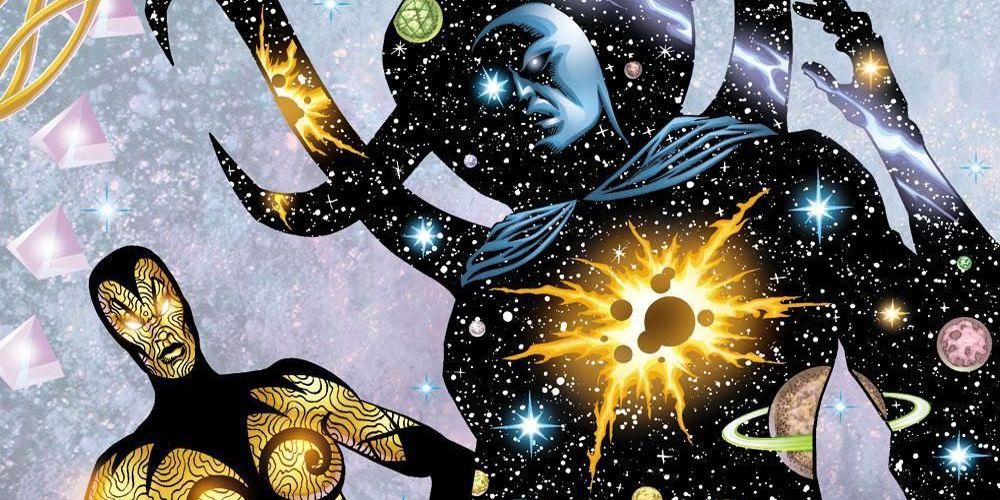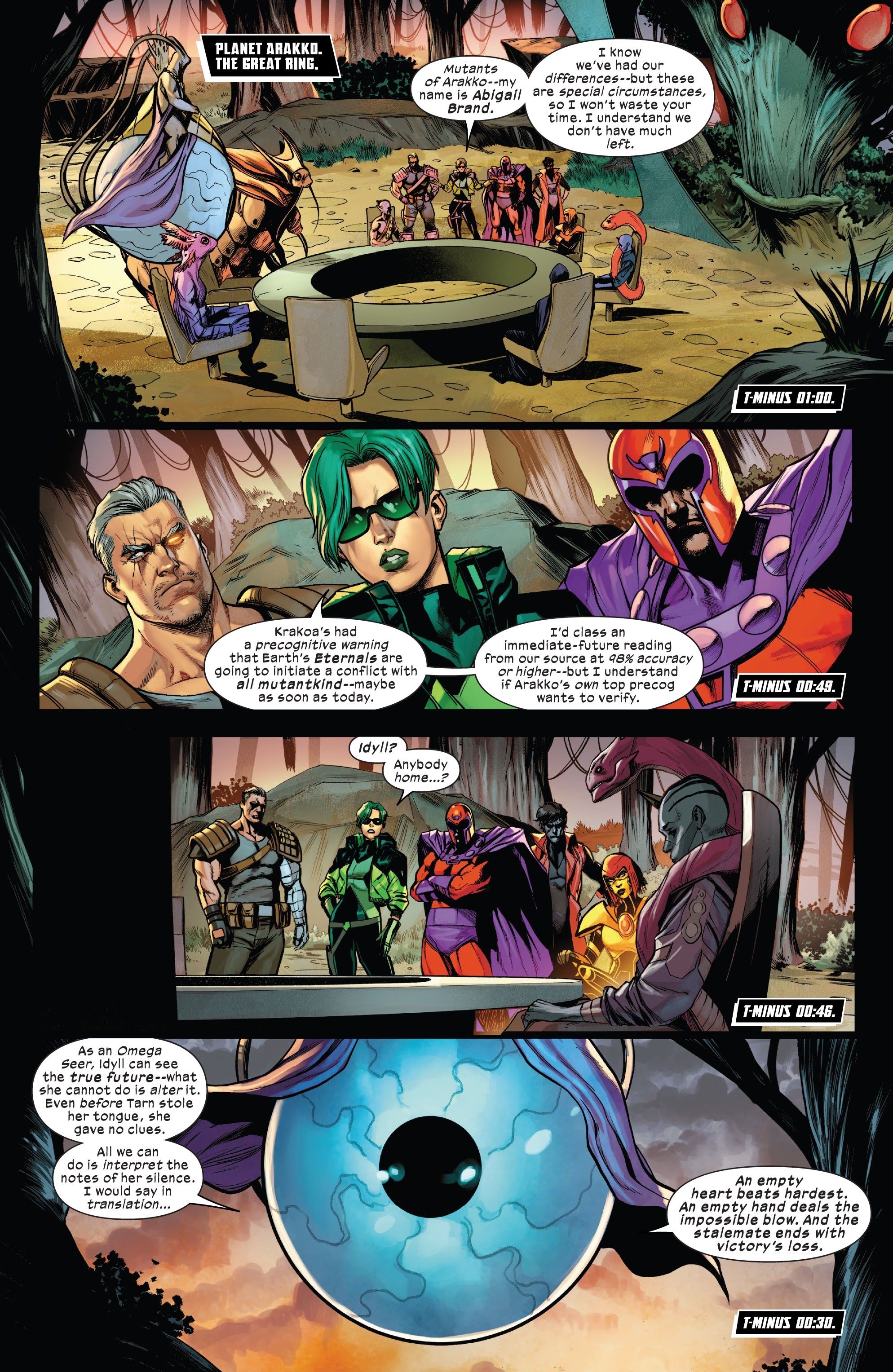Warning: Spoilers ahead for X-Men Red #5!The lore behind Marvel's cosmic side is vast and has yet to be defined in its entirety, but new insight into the function of their space-time continuum reshapes how time-travel works in the Marvel Omniverse. Traditionally, Marvel lore holds that time-travel cannot alter the future, but it can branch the timeline off into a reality with a different future. X-Men Red #5 from Al Ewing, Stefano Caselli, Federico Blee, VC's Ariana Maher, and Jordan D. White seems to challenge this notion, and it would appear that writer Al Ewing has been tracing this thread throughout his Marvel titles for years.
The current understanding of time in Marvel lore is based on a nexus model. The future cannot be changed, but every day actions as well as the intervention of time travelers can cause a singular timeline to branch into multiple realities. Immortal X-Men #3 by Kieron Gillen, Lucas Werneck, Dijjo Lima, VC's Clayton Cowles, and Jordan D. White came out just weeks ago and reinforced this idea from Destiny's perspective. Irene Adler's mutant gift allows her to see these points of nexus as well as the events most likely to cause or result from them. With this knowledge Destiny does not change the future, but rather she acts to push and pull her present toward the potential timeline she finds most desirable. Irene is not mutantkind's only powerful precognitive, and Krakoa's sister society of mutants on planet Arakko parallels the mutants of Earth in many ways. Over on Arakko, X-Men Red #5 focuses on Destiny's opposite number within their governing body, the Great Ring. She is Idyll, and her existence introduces a larger reframing of Marvel time-lore as a whole.
Idyll is an Omega-level mutant with precognitive abilities. Her name has a double meaning as her mutant gift allows her to see the "true future," but her awareness of the objective future prevents her from acting in ways that would change future events. As a result she often remains idle. This seems contrary to Marvel lore, as Idyll's perspective presents a course of events that are set and will only ever occur in one manner. How can there be branches as well as one set path? The truth is, Destiny's perspective, and thereby the rest of Marvel lore, can co-exist with Idyll's abilities. Destiny sees all that can happen, while Idyll sees specifically what will happen. If Destiny peers through particular futures and seeks to alter the course of her timeline, or if a time-traveler arrives in Marvel's present to avert their future, Idyll simply already knows of their actions and the consequences. Time travel does not change the "true future," instead it is a necessary part of the 'true future' coming to pass. The one "true future" is filled with its own revisions and edits, and it can be assumed that Idyll's ability gives her awareness of this.
This argument is head-achingly metaphysical, but it is a theme that X-Men Red scribe Al Ewing has returned to time and time again in his work at Marvel. Ewing touches on his thesis for the nature of time travel in the Marvel Omniverse as the author of Loki: Agent of Asgard and last year's Defenders miniseries, but his most direct presentation on the subject occurs elsewhere. In Ultimates #5 by Al Ewing, Kenneth Rocafort, Dan Brown, VC's Joe Sabino, and Wil Moss, Galactus reveals the nature of space-time to the team. Rather than a static object that can be broken the actions of precognitives or time travelers, Galactus explains that "[history] shifts. It slides. As does the future ... Changes can be made. New branches and sidestreams--alternate histories. Or the ripples in the main flow change the past further, altering the present." Time is not a thing to be fixed, it is fluid, and in a way, this is also a meta explanation of Marvel's sliding timescale.
But how can time be fluid if there is also the "true future?" Cosmic figures like Galactus see time as a fluid that changes as it goes. Similarly, Destiny sees and impacts all that can happen from her present moment. In this vast stream of time, Idyll sees the exact path taken by the single droplet that is the timeline of Universe 616. Just as a droplet's course is shifted by an object thrown from down or upstream, so can Idyll see the path of the timeline as it is altered and revised by the efforts of others. Simultaneously there is a 'true future' while time as a whole is mutable. The "true future" is the exact order of future events, including reality warps and time travel idiosyncrasies that alter a timeline's direction. Idyll's view assumedly contains all of that knowledge and more. It is an immense power and befits the title of an Omega-level mutant, and it seems necessary from a story perspective that such an overwhelmingly extensive level of sight prevents Idyll from acting against what she sees.
Though it may melt the brain to dwell on it for too long, the nature of time-travel and time itself within the cosmology of the Marvel Omniverse has been explained in an expansive new way because of one mysterious mutant. Galactus teaches that time is a fluid entity, and that past, present, and future events ripple and warp each other constantly. And yet Destiny's perspective proves that the actions of individual beings are at the center of these ripples, guiding the timeline through a variety of possibilities. Though Idyll herself is unable to alter the flow of the timeline, she sees the flow in its entirety, even if the one "true future" arrives at a point that sends back a traveler to divert the entire timeline. She sees the full route of time's ripples. The existence of Idyll adds new layers to Marvel's cosmic lore, and the revelation of her mutant gift alters how fans will understand time-travel moving forward.
X-Men Red #5 is available now from Marvel Comics.


